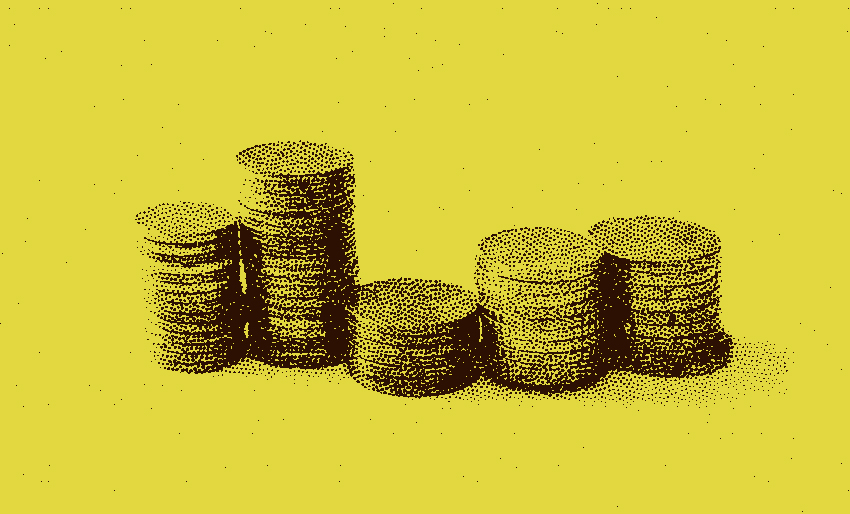How Much Debt Is Too Much?
By Dan Nastou, CFA
It’s no secret that consumer debt has become a serious problem in recent years. From onerous student loans, to high-interest credit card debt, or even large mortgages draining our finances, debt can easily dominate our financial lives if we aren’t careful. And yes, in a perfect world we wouldn’t ever need to take any on. But in reality, most of us will at some point. Which means we need to know how to deal with it responsibly and sure we don’t take on too much.
So just how much debt is too much? Let’s get into it.
For starters, not all debt is created equal
Before we dive into details, we need to recognize there’s a variety of debt types out there – some much worse for our finances than others. And while personal finance best practices can sometimes be a bit nuanced, there’s not much debate about the dangers of high interest debt.
Long story short, it’s almost never a good idea to carry high interest debt balances, like credit card debt or other forms of personal loans. These often charge interest rates of 20% or more and can quickly spiral out of control if not addressed immediately.
So in other words, any amount of high interest debt is likely going to be a problem. You’ll want to do whatever you can to avoid it and pay it off as quickly as possible if you have any.
But what about lower interest debt?
For the most part, we’re talking about student loans, mortgages, and car loans here.
These types of loans are sometimes referred to as “good debt” because they tend to charge lower interest rates, and can potentially help you build wealth, as in the case of mortgages and student loans – if used appropriately. And since the rates are usually lower than for credit card debt, it’s generally less important to pay off these balances with the same urgency.
However, even debt charging a relatively low interest rate can still become a problem if you have too much of it.
That’s because it’s still a liability and it still charges you interest, even if it’s a lower rate.
Which brings us back to our initial question; How much debt is too much? Well, as you can probably guess, the answer won’t necessarily be the same for everyone.
For example, a married couple earning $300,000 a year with $50,000 of combined debt is in a much different financial situation than a recent grad earning $40,000 with $50,000 of student loans. So rather than focus solely on the dollar amount, it’s helpful to think in terms of a few key ratios, specifically, ratios comparing our debt to our income.
Understanding your debt-to-income ratio
Your debt-to-income ratio, or DTI, is a calculation lenders use to determine your ability to pay your debts (and your ability to take on more debt).
Your DTI is calculated by adding up your monthly debt payments and dividing by your monthly pre-tax income. Really we should be calling it your monthly debt-to-income ratio if we want to be even more accurate, but who’s counting.
So for example, if you have $1,500 of monthly debt payments and your monthly income is $5,000, your debt-to-income ratio would be 30% ($1,500 divided by $5,000 is 30%).
So what’s a “reasonable” number for a debt to income ratio?
Of course the lower your ratio the better – in an ideal world you wouldn’t have any debt payments to make. However, but one key threshold to pay attention to is a debt-to-income ratio of 43% or lower. That’s what you need in order to be eligible for a qualified mortgage. Basically it’s a mortgage that meets certain standards of protections for you the borrower. Exceeding it doesn’t necessarily mean you can’t get a mortgage, but they may be riskier mortgages.
Also keep in mind, that 43% ratio is just what you need in order to qualify. It’s not necessarily where you want to be. If you’re spending 40% of your pre-tax income on debt payments, you probably aren’t saving as much as you should. So you really should try to keep this ratio well below that number if you want to keep your debt in check.
Also consider your total debt relative to income
Another useful ratio to calculate is your total debt relative to your annual income. This number tells you roughly how many years it would take to pay off your debt if 100% of your income was going towards paying it down.
Okay, clearly this is just a hypothetical reference point because you can’t spend 100% of your income on your debt balance. But it does give you a rough idea of how substantial your debt burden is relative to your earning power. And that will come into play as you figure out a strategy for paying it off. Generally speaking, the higher the number, the more aggressive you’ll need to be.
So if you have $24,000 of debt and make $50,000 a year, your total debt-to-income ratio would be 0.5. If you have $75,000 of debt and make $50,000, your ratio would be 1.5.
Is there a “right” amount for this ratio?
Again, not exactly. Lower is obviously better for this one too, but it will partly depend on your particular situation. For example, if you’re young and just bought a home, your mortgage will probably be pretty high relative to your annual income. But over time you’ll pay the balance off as you keep making your mortgage payments. In this scenario, having a total debt balance equal to a multiple of your annual income is certainly not out of the question.
However, if you’re talking about non-mortgage debt, like student loans, car loans, and maybe even credit card loans, then having total debt equal to several times your annual income is a major issue. And you’ll need to take serious steps to bring your debt levels down. Not counting a mortgage, you probably don’t want your debt balance to exceed 50% of your annual income. And again, if it’s high interest debt, like credit card debt, you’ll want to pay that down ASAP.
Lowering your debt-to-income ratios
No matter where you stand today, you’ll want to be deliberate with how you handle your debts. And at the risk of stating the obvious, if you want to lower your debt-to-income ratios, you need to either 1) earn more income or 2) pay down your debt balances.
The urgency with which you tackle your debts will of course depend somewhat on the type and amount of debt. But overall, the faster you pay down your balances, the more you’ll benefit from interest compounding. That’s because the sooner you pay down your balances, the less you’ll end up paying in future interest expense. Which means you’ll have even more money for paying down the balances, which means even lower interest expenses…well, you get the idea. Just as a ballooning debt balance will work against you, paying it down sooner will work in your favor.
You’ll still want to balance your competing financial priorities as you allocate your budget – like whether you should be using extra cash to pay down or invest it. But overall, it pays to get out of debt sooner rather than later. So get to it!
This is intended for educational purposes, not financial advice. Talk to your financial professional if you need help or are thinking about making changes to your investments.



